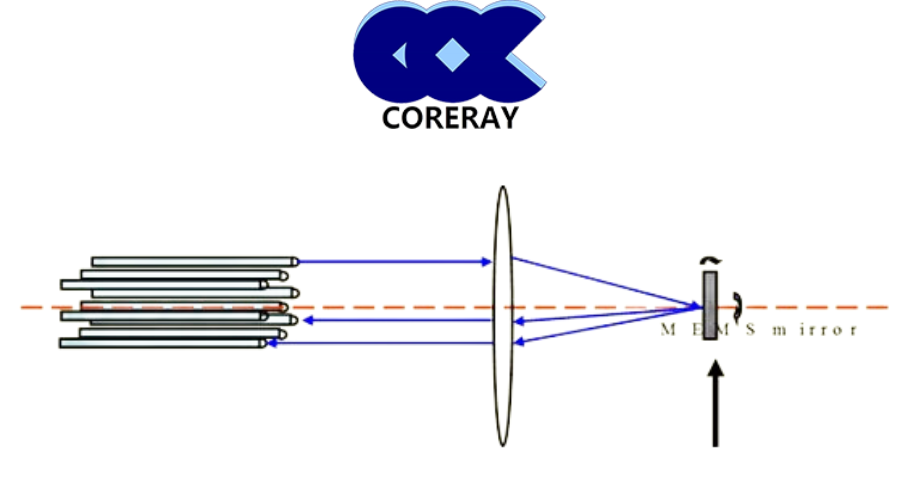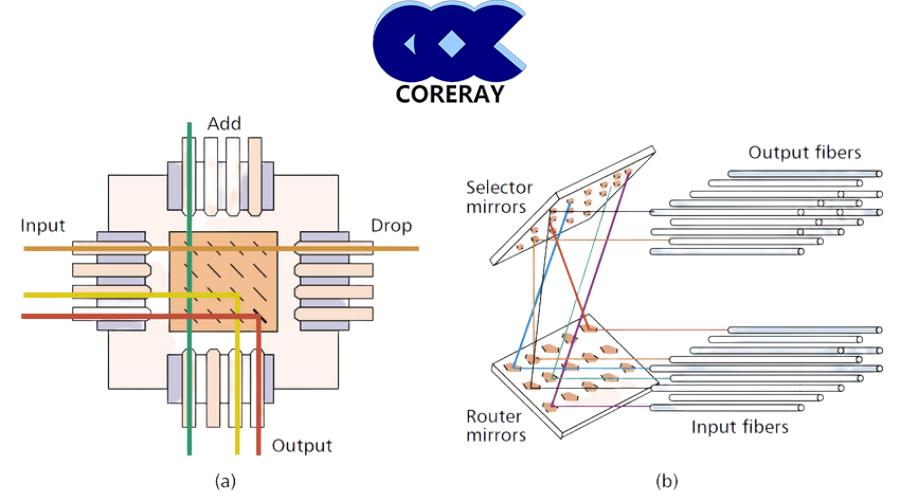
Oct 24,2023
MEMS optical switches are at the forefront of modern technology, enabling seamless control of light paths in various applications. This comprehensive guide will delve into MEMS optical switches' working principles and numerous applications. From telecommunications to medical imaging and data centers, these engineering marvels transform how we interact with technology. Let's embark on a journey to unravel the mysteries of MEMS optical switches.
MEMS optical switches operate on a simple yet ingenious principle. They utilize Micro-Electro-Mechanical Systems (MEMS) to control the propagation of light. These microscopic mechanical components are the heart of the switch, allowing it to direct light signals with precision.
These switches offer rapid response times, making them invaluable in industries where quick light path adjustments are essential. With their ability to guide light precisely, MEMS optical switches are the cornerstones of modern optical systems.

A fiber optic switch is a versatile multiport device in various port configurations, such as 2×2, 1×N, and N×N. An optical switch with N×N ports is called an OXC, which stands for optical cross-connect. The schematic representation of a MEMS-based 1×N optical switch is depicted in the diagram (Fig). This switch comprises essential components, including a MEMS torsion mirror, a collimating lens, and a multi-fiber pigtail. The MEMS mirror is typically affixed to a TO (transistor outline) base, followed by the attachment of the collimating lens to this sub-assembly through the TO cap. Lastly, the multi-fiber pigtail is meticulously aligned with the sub-assembly for optimal performance."

To comprehend the working principle of MEMS optical switches, it's essential to understand the role of Micro-Electro-Mechanical Systems. MEMS technology involves integrating mechanical components, sensors, actuators, and electronics on a microscopic scale. In the context of optical switches, MEMS components manipulate tiny mirrors or waveguides, allowing for precise control of light paths.
MEMS technology empowers these switches to redirect light swiftly and accurately, making them versatile tools for various applications.
The primary function of MEMS optical switches is to control the paths of light. This control is achieved by precisely positioning tiny mirrors or waveguides that reflect or direct sunlight. By altering the orientation of these components, the switch can change the path of light signals, allowing them to be routed where required.
This level of control over light is essential in many applications, from data transmission to medical imaging and beyond.
MEMS optical switches play a pivotal role in the telecommunications industry. They enable the rapid switching of optical signals in fiber-optic networks, ensuring data reaches its destination efficiently. This technology forms the backbone of high-speed internet and clear voice communication.
With MEMS optical switches, network providers can offer reliable and high-performance services to users worldwide, enhancing how we connect.
In the world of data centers, efficiency is paramount. MEMS optical switches are crucial components that facilitate the seamless routing of data signals within these facilities. Their ability to swiftly switch connections reduces latency and improves overall network performance.
Data centers equipped with MEMS optical switches can easily handle large volumes of data, ensuring the smooth operation of cloud services and web applications.
The medical field benefits significantly from MEMS optical switches. These switches are used in advanced imaging systems, such as endoscopes and confocal microscopes. By precisely directing light, they enhance the clarity and accuracy of medical images.
MEMS optical switches enable healthcare professionals to make more accurate diagnoses and provide better patient care, ultimately saving lives.
Optical fiber networks underpin the digital world and rely on MEMS optical switches. These switches ensure that data travels seamlessly through the extensive network of optical fibers. Whether streaming content, making online purchases, or conducting business, MEMS optical switches contribute to a fast and reliable online experience.
With the expansion of optical fiber networks, the role of MEMS optical switches in our daily lives continues to grow.
The precision and speed of MEMS optical switches are unmatched. These switches respond almost instantly when a light signal needs to be redirected or switched. This rapid response time ensures minimal disruption and data loss in various applications, making them a valuable asset.
MEMS optical switches are engineered to be compact and efficient. Their small form factor allows them to be integrated into systems where space is limited. This design flexibility makes them ideal for applications where real estate is at a premium.
In critical applications like telecommunications and medical imaging, reliability is paramount. MEMS optical switches are renowned for their robustness and dependability. They can operate continuously without significant wear and tear, ensuring uninterrupted service.
While MEMS optical switches offer numerous advantages, they are not without challenges. One common challenge is precise control and alignment of the microscopic components. The cost of manufacturing high-quality MEMS switches can also be a limiting factor.
The future of MEMS optical switches is bright. Ongoing research and development are addressing current challenges. Emerging trends include advancements in manufacturing techniques, cost reduction, and integration with emerging technologies like 5G and the Internet of Things (IoT).
Real-world examples of how businesses benefit from MEMS optical switches showcase their practical applications. Companies across various industries are harnessing the power of these switches to improve their services and products.
We reached out to industry experts to gain insights into the potential of MEMS optical switches. Their opinions and experiences illuminate these switches' transformative role in modern technology.
How do MEMS optical switches work?
MEMS optical switches manipulate light by precisely positioning microscopic mirrors or waveguides. By changing the orientation of these components, they can redirect light signals as needed.
What are the key advantages of MEMS optical switches?
The key advantages include rapid response times, compact design, and exceptional reliability. These switches are essential in applications where precision and speed are crucial.
Where are MEMS optical switches commonly used?
They are commonly used in telecommunications, data centers, medical imaging, and optical fiber networks.
Are there any limitations to MEMS optical switches?
Challenges include the need for precise control and alignment of components and the cost of manufacturing high-quality switches.
How are MEMS optical switches different from traditional optical switches?
MEMS optical switches use micro-electro-mechanical systems to control light, offering rapid and precise switching, while traditional optical switches may rely on bulkier mechanisms.
What does the future hold for MEMS optical switches?
The future is promising, with ongoing research addressing current challenges and emerging trends integrating MEMS switches into new technologies.
In the ever-evolving landscape of technology, MEMS optical switches stand out as marvels of precision and reliability. Their role in telecommunications, data centers, medical imaging, and optical fiber networks is pivotal, making our digital lives faster, more reliable, and more efficient. As we look to the future, the continued development of MEMS optical switches promises even more exciting applications and breakthroughs.
Thank you for exploring the world of MEMS optical switches with us.